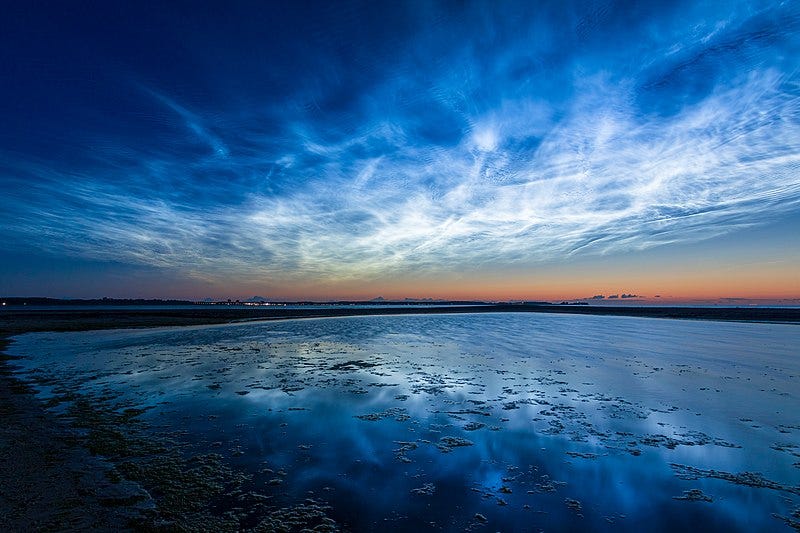SpaceX launches are modifying the upper atmosphere
It's probably harmless (and so just neat), but we've never done this before.
I mentioned during our COVID response that, if you want to run an experiment involving human subjects in an academic setting, you generally must have the research approved by something like an institutional review board. And this board will set requirements for the work, especially to protect the participants, which would commonly include something like “anyone may opt out of further participation in the experiment at any time”.
I mentioned this during the COVID response because we were, in effect, running a mass experiment (several overlapping ones) on the whole population at once. If you had asked an IRB, as part of an experiment, “can we compel ten-year-olds to mask for seven hours a day, and no they aren’t allowed to opt-out if they still want to attend school”, the proposal would have been shot down as remarkably unethical. But it’s totally fine, apparently, if you can just run the experiment on the whole population at once.
And that seems to be the way today, mass experiments on everyone at once. Sometimes it seems pretty darn clear ahead of time that there will be negative consequences (“let’s tell a bunch of girls, that they’re really boys trapped in girls bodies, and that only drugs and surgery will make them happy”). Other times it’s a little less clear, anyway, that the experiment will produce harm (“let’s give every teenager a smartphone” perhaps in this category).
About SpaceX
So that might all seem rather scary… I share the rest of this mainly just because I find it interesting, actually, but here we go. We’ve been launching stuff into space for many decades now but, if you don’t know, SpaceX all by itself has dramatically increased the number of launches. Per Our World in Data, in 2010 there were 120 objects launched into space. In 2023, there were 2,664. Now “objects” is not “launches”, but gives you some idea.
Or from Gunter’s Space Page, in 2023, there were 107 orbital launches from the US. 96 of them were SpaceX Dragon launches, and 2 were SpaceX Starship launches. There were 121 other total launches worldwide (China, and then Russia, being the other two big sources). So about 43% of all launches worldwide were SpaceX launches. Love him or hate him, Musk really is a visionary and effective force here.
So we’re punching rockets through the upper atmosphere like never before, and that seems to be having an effect. The rest of this post is prompted by reporting from SpaceWeather, my favorite, well, space weather website. They have noted two things.
Holes in the ionosphere
One, launches are punching holes in the ionosphere. This video is actually from a Firefly Aerospace launch on July 3rd. The glowing red you see there is the hole.
The ionosphere is an ionized part of the upper atmosphere (approximately 30 to 600 miles up), ionized by the impact of solar radiation that knocks off electrons. It is practically important because the ionosphere is how radio waves are able to propagate over the horizon. So before satellite communication, of course, this was very important for vessels at sea and aircraft and such (and HF communications are still a thing). Today ham radio operators, one group still very keen to send radio waves over the horizon, might notice they can’t pick up stations from as far away.
The water and carbon dioxide being spit out the back of the rocket significantly reduce ionization where the rocket goes through, and all those electrons suddenly hopping around in energy level produce red light. The holes go away when the sun comes up and re-ionizes the atmosphere. So this is all harmless then, all undone when the sun rises again? Probably. But we’ve just never done it on this scale before.
Noctilucent clouds
And two, there seems to have been an increase in the number of noctilucent clouds. Now, far as I know I’ve never personally seen a noctilucent cloud, but they look something like this1:
These clouds are composed of ice crystals, scattering the remnant light, generally only visible just after sunset. And they are very high, up in the mesosphere, 250,000 to 275,000 feet up there, way above your commercial airline flight. They are normally confined to the Arctic Circle. And there are generally fewer of them during the solar maximum, because ultraviolet light from the sun breaks the water molecules up there apart. But lately, despite that fact that we are in a solar maximum right now (remember the mega-aurora display), they have been seen at lower altitudes in Europe.
Why? Well the suggestion is, something is adding water vapor to the mesosphere to make more of these clouds, and your choices there are basically “volcanic eruptions” and “rocket launches”.
Again, probably harmless. I’m not aware of any major effect these clouds have besides looking pretty. But we’ve just never done this before. It is at least neat.
THE END
Affiliate Links
Swan Bitcoin: http://swan.com/davidshane
Matthias Süßen, CC BY-SA 4.0 <https://creativecommons.org/licenses/by-sa/4.0>, via Wikimedia Commons


Very interesting’
Samantha Carter was a menace to the galaxy. She was an unveiled case of art imitating life.